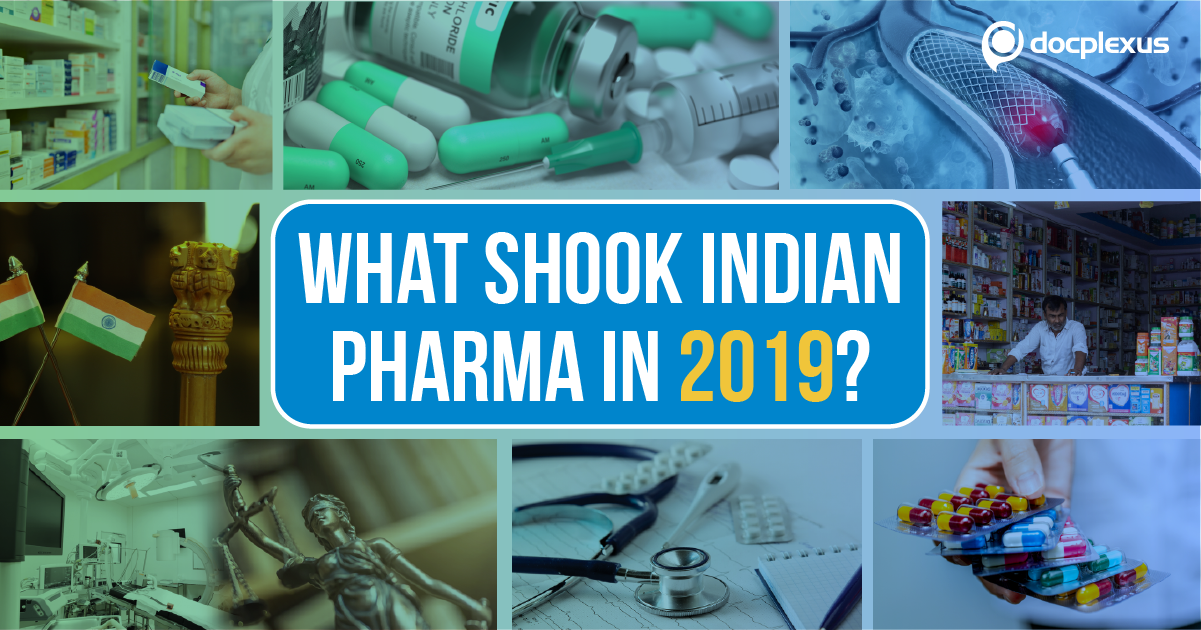
2019 has been an eventful year for Indian pharma with a wave of government proposals and regulatory setbacks, both at national and global level. Let’s review the 3 key happenings that affected the Indian Pharma Industry in 2019.
1. JAN AUSHADHI SCHEME
A Quick Rundown: In an attempt to enable accessibility to proper healthcare for all citizens, Pradhan Mantri Bhartiya Jan Aushadhi Yojna was re-launched in September 2018 (first launched in 2008 by the DoP – Department of Pharmaceuticals) and came into effect in early 2019. The launch of Jan Aushadhi stores was government’s tactical intervention against the unreasonable pricing of generic medicines by big pharma brands. Today, more than 4000 Pradhan Mantri Bhartiya Jan Aushadhi centres are functional in the country, covering a list of 800+ chronic and acute drugs. These drugs are discounted by almost 50 to 90% in comparison to their branded counterparts. By 2020, the government plans to open another 2,500 stores across the country.
Impact on Indian Pharma: The Jan Aushadhi Scheme is expected to disrupt around 20% of Indian pharmaceuticals market sales. Edelweiss notes that around INR 6,000 crore of Bureau of Pharma PSUs of India (BPPI) drugs could adversely affect a sale of INR 25,000 to 30,000 crore branded medicines, assuming an average price differential of five times. With each store selling Rs 5 lakh worth medicines, the Jan Aushadhi scheme will account for sales worth INR 600 crore by 2021, causing a direct impact on the revenue graph of big Pharma brands.
2. US FDA WARNINGS
A Quick Rundown: Many Indian Pharma brands which dominated the US generics market in the past, faced a period of flux due to regulatory crackdown by the USFDA. Post the ranitidine alert in September this year, 3 leading drug manufacturers received warning letters from the US healthcare watchdog. Indian pharmaceutical factories collectively churn out 40% of the American generic drug supply. Faulty production from these factories has been a matter of concern for the FDA even in the past with several factories being flagged for misbranding, tainted drug supplies, and violating Current Good Management Practices (CGMP).
Impact on Indian Pharma: The US accounts for 1/3rd of Indian Pharma exports. Once a warning letter is issued by the USFDA to the manufacturing plants, the plant is barred from supplying the new lot to the US market. Moreover, it increases the company’s spending on quality improvements. Frequent inspections and resultant warnings have adversely impacted the revenue growth and profit graph of the pharma export market.
3. PRICING CAPS
A Quick Rundown: The $5 billion medical devices market suffered a setback when 15 medical devices were classified as drugs by the National Pharmaceutical Pricing Authority in 2017 and brought under price control in Jan 2018. In the wake of issuing price control policies, 42 non-scheduled cancer drugs underwent price control— capping on trade margins at 30% in March 2019. Only recently in November 2019, the DoP, Pharma lobby groups, and other pharma associations agreed to 30% Cap on Trade Margins on all medicines outside price regulation. The move intends to curb profiteering in the supply chain.
Impact on Indian Pharma: When cancer drugs underwent price control earlier this year, prices of close to 72 formulations across 355 brands were reduced by 85%. The 30% cap on trade margins on non-scheduled drugs is predicted to affect big pharma companies with generic divisions. It will reduce the prices of nearly 80% of formulations.
As we move into 2020, the dynamics shaping the Indian Pharma landscape will shift, however, keeping an eye on the major happenings now will train Indian Pharma for future events.
Comments